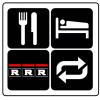New Shoes
Announcements
-
Similar Content
-
Latest Posts
-
Ok so i will NEED to have this sensor anyway even with Nistune (or standalone ECU) https://justjap.com/products/genuine-nissan-boost-pressure-sensor-evap-control-system-fits-nissan-r34-skyline-c34-nm35-stagea-pnt30-x-trail-rb25det-vq25det-sr20vet?currency=AUD&srsltid=AfmBOoqfxX48bW9bEwH62orcNhtBfp7ekAL0C9Ca89ySFGUiBzXfXeze Is this the correct one? And this is only thing i need? No other "things" connected to the sensor or something? I do have the wiring.
-
Yes it can be adjusted so that it does not ruin the party in Nistune. But you must have the sensor connected or the ECU will be bitchier than a teenage daughter.
-
Agreed, wooden ramps can’t go wrong. Or buy low profile ramps ie. gktech
-
I find that a single 50mm plank is sufficient to raise the car to get a low profile trolley jack under the engine cross member or rear diff. Then I use a 50mm block on the trolley lift point.
-
By RB25inside · Posted
UPDATE: Yes the GSP Axles are compatible. I installed it on my R34 today and they are working a treat! Turns out that the S13, S14, S15, and 200 SX all used the same axles as the HR34, and ER34 NA models. Which is 2 bolt x 3 pairs.
-






Recommended Posts
Create an account or sign in to comment
You need to be a member in order to leave a comment
Create an account
Sign up for a new account in our community. It's easy!
Register a new accountSign in
Already have an account? Sign in here.
Sign In Now